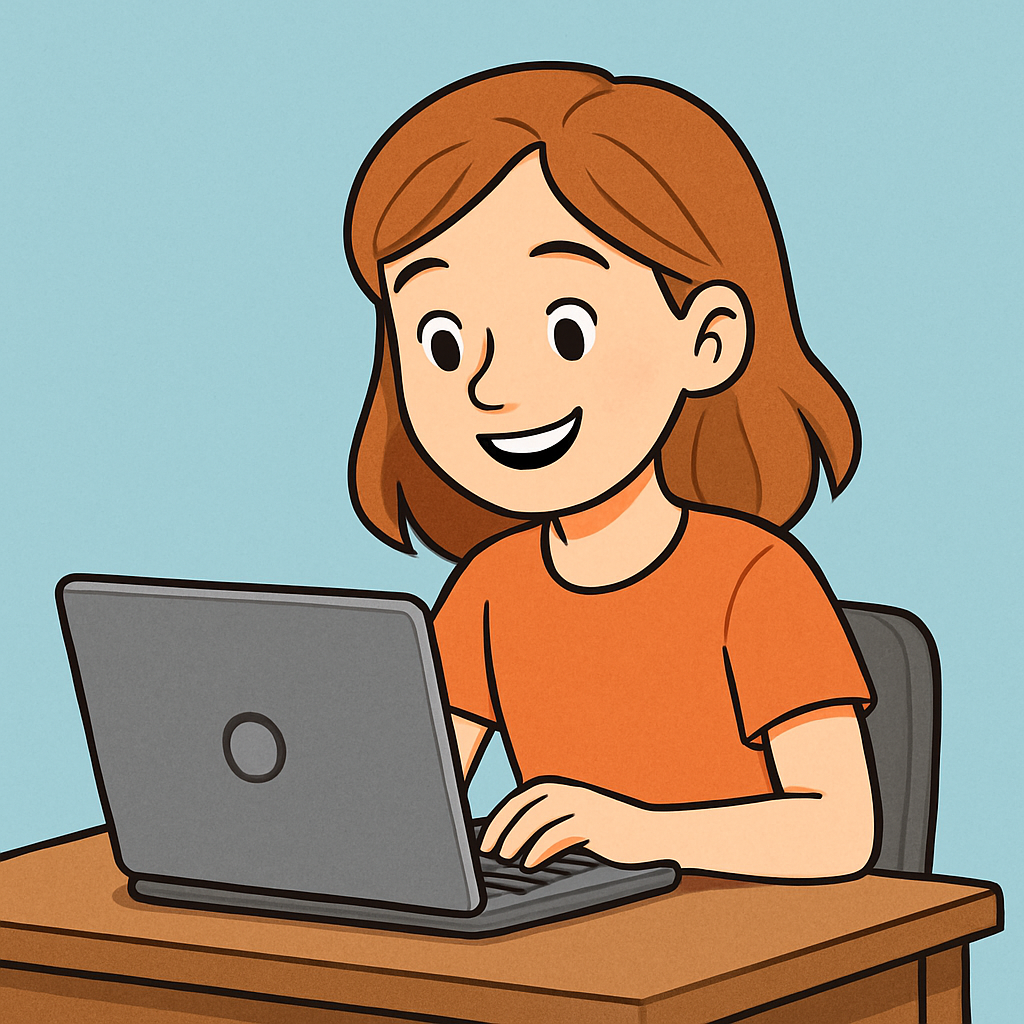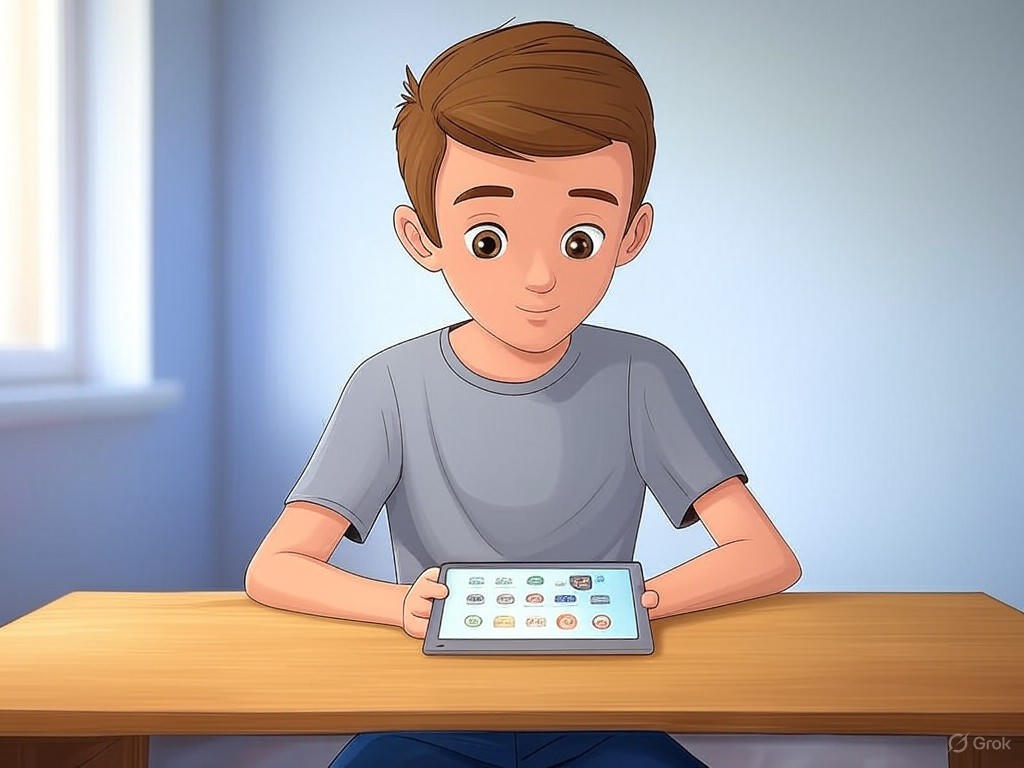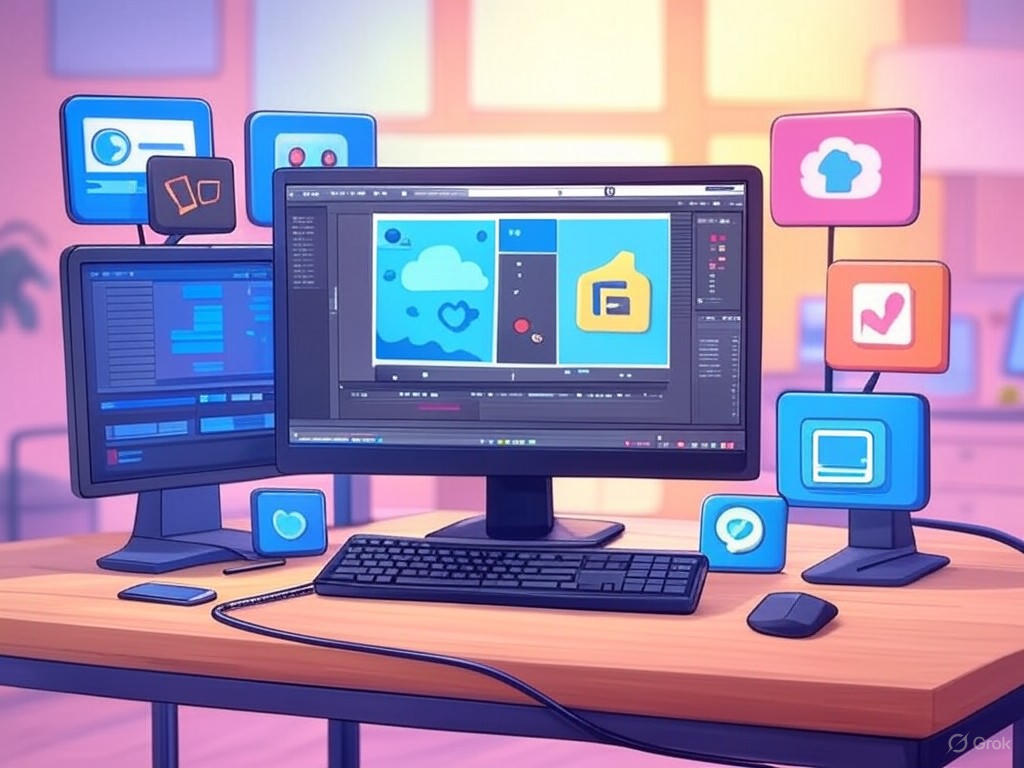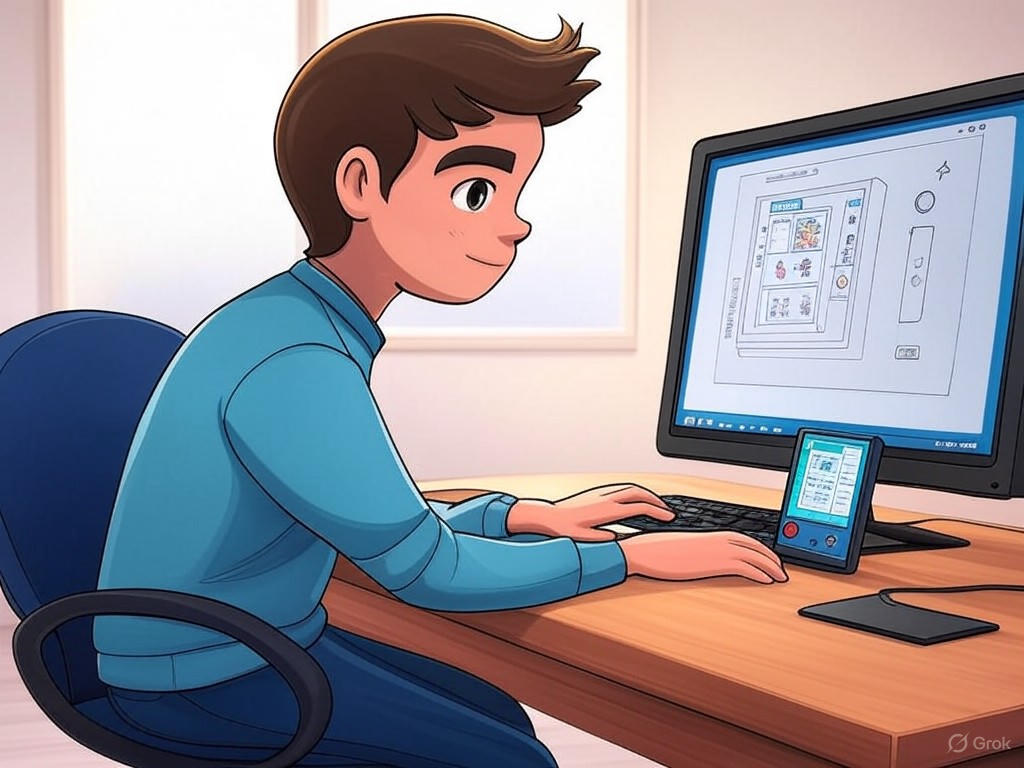 In this lesson you will learn what digital tools are and examine some common examples that you might use for communicating with others, collaborating on group projects, creating artwork, or acquiring new knowledge. We will review examples that simplify everyday tasks. By the end, you will consider the importance of selecting the appropriate tool and preview how you will apply them in this course. This will help you develop greater confidence in using technology effectively, whether at home or in school.
In this lesson you will learn what digital tools are and examine some common examples that you might use for communicating with others, collaborating on group projects, creating artwork, or acquiring new knowledge. We will review examples that simplify everyday tasks. By the end, you will consider the importance of selecting the appropriate tool and preview how you will apply them in this course. This will help you develop greater confidence in using technology effectively, whether at home or in school.
Reflect on how you use your phone or computer daily – perhaps sending messages to friends, creating images, or researching facts about animals or sports. These activities are supported by digital tools, and understanding them can make your online experiences more efficient, secure, and productive.
 Digital tools are apps, websites, or software that help you do things on computers, tablets, or phones. They make tasks like communicating, creating, or learning quicker and more fun. Unlike physical tools like pencils or books, digital tools are electronic and often connected to the internet, so you can use them anywhere with a device. This means you don't have to carry around heavy books or wait for the post to send a letter – everything is right in front of you.
Digital tools are apps, websites, or software that help you do things on computers, tablets, or phones. They make tasks like communicating, creating, or learning quicker and more fun. Unlike physical tools like pencils or books, digital tools are electronic and often connected to the internet, so you can use them anywhere with a device. This means you don't have to carry around heavy books or wait for the post to send a letter – everything is right in front of you.
Imagine you're building a model aeroplane with physical tools like glue and scissors. Digital tools are like that, but for your online world. For example, a messaging app lets you chat instantly with friends across the world. Or think about a drawing app – it helps you design pictures without needing paper, pens, or even cleaning up mess afterwards. You can undo mistakes with a click, try different colours easily, and save your work forever.
Digital tools are everywhere in your daily life – from schoolwork, like using the calculator on your phone for maths, to playing games on your tablet. They even help with fun stuff, like editing photos to make them look better or creating playlists of your favourite songs. And the best part? These tools keep getting better with new updates, adding features like stickers in chats or new brushes in drawing apps. But remember, not all tools are the same, so the key is knowing which one to pick for what you need. This way, you can work efficiently, stay safe online, and avoid things like sharing too much personal information by accident.
Digital tools can also save time and make things easier for everyone. For instance, instead of writing a story by hand and then copying it for friends, you could use a writing app to type it, add pictures, and share it instantly. They're great because they're flexible – you can use them at home, in school, or even on a bus if you have Wi-Fi. Just like learning to use a new toy, getting comfortable with digital tools opens up a whole world of possibilities.
 Digital tools come in different types, each great for specific jobs. Just like how you might use a pencil for drawing, a book for reading, or a ball for playing, digital tools are designed to help with different activities on your device. Let's explore four main categories in more detail, with examples you might already know or want to try. We'll talk about what they do, why they're useful, and how they can make your life more interesting.
Digital tools come in different types, each great for specific jobs. Just like how you might use a pencil for drawing, a book for reading, or a ball for playing, digital tools are designed to help with different activities on your device. Let's explore four main categories in more detail, with examples you might already know or want to try. We'll talk about what they do, why they're useful, and how they can make your life more interesting.
These are all about talking to others online, whether it's your friends, family, or even classmates. They help you share messages, photos, or videos quickly and easily, no matter where you are. For example, messaging apps like WhatsApp or Snapchat let you send quick chats, funny stickers, or short videos to your friends. Then there's email services like Gmail, which are better for longer messages, like writing to your teacher about homework. These tools are super handy because they keep you connected without needing to meet in person, and they can even save your conversations so you can look back at them later.

These are perfect for working together on something, like a team project at school or planning a group activity. They let multiple people add ideas, edit, and see changes in real time. A great example is Google Docs, where you and your friends can all type on the same document at the same time. It's like passing a notebook around, but way faster and without losing pages. You might use it for a group report on animals, where one person adds facts, another adds pictures, and everyone can comment. Tools like this make teamwork fun and organised, helping you avoid mix-ups and finish tasks quicker.
These spark your imagination and help you make cool things, like art, music, or designs. They're like a digital art box that never runs out of supplies. For instance, Canva is great for designing posters, birthday cards, or even comic strips. You can drag and drop images, choose fun fonts, and add colours without any mess. Another one is apps like GarageBand, which let you create your own music by mixing sounds, beats, and even your voice – perfect if you dream of being a DJ or singer. These tools encourage you to experiment, undo mistakes easily, and share your creations online. They're great for expressing yourself, whether you're making a gift for a friend or just doodling for fun.

These make studying and discovering new things easier and more enjoyable, turning lessons into games or interactive adventures. Platforms like Coding Ireland offer interactive lessons and quizzes on topics such as coding, game design, and digital skills, with step-by-step lessons and practice challenges that you can complete at your own pace. Or try Duolingo, which helps you learn languages like French or Spanish through fun games and challenges. These tools are brilliant because they adapt to what you need, give instant feedback, and track your progress. You could use them to prepare for a test, explore a hobby like coding, or just learn something different, like how volcanoes work.

Choosing the right digital tool is like picking the best outfit to wear on a rainy day – it makes everything more enjoyable and easier. Just as you wouldn't wear a raincoat on a summers day, each digital tool fits certain tasks. To choose wisely, ask yourself: 'What am I trying to do? Who else is involved? Is it easy and safe? Does it need internet?' Thinking this way helps you avoid problems and get things done quicker.
Suppose you want to tell your friend about a funny video you saw or ask about homework. A communication tool like WhatsApp is perfect. It's fast for sending messages, emojis, or photos, and you can chat privately without waiting. Using something like Google Docs here wouldn't make sense – it's not built for quick chats and could feel confusing.
Now imagine you're working on a science project about volcanoes with your classmates. You all need to add facts, pictures, and ideas together. A collaboration tool like Google Docs is ideal because everyone can edit the same document at the same time, add comments, and see updates instantly. This keeps things organised and helps you avoid emailing files back and forth, which can get messy. If you used a messaging app instead, important ideas might get lost in the chat.
What if you need to create a poster advertising your school's bake sale? A creativity tool like Canva works best. It has easy templates, fun fonts, and drag-and-drop images, so you can design something eye-catching without any art supplies. An email tool like Gmail wouldn't help much here – it doesn't have design features, and you'd end up with a plain message instead of a colourful poster.
Let's say you want to practise Spanish for a family trip. A learning tool like Duolingo is great because it turns lessons into games with quizzes and rewards, tracking your progress. Choosing a drawing app for this wouldn't fit – it might be fun for art, but it won't teach you words or grammar.
Why does choosing matter? The right tool saves time, keeps you safe (like with privacy settings), and makes tasks enjoyable. Wrong choices can lead to frustration, like losing work or sharing accidentally. As you practise, you'll get better at picking tools for homework, hobbies, or fun!
 In this course, you'll use digital tools for lessons, projects, and fun activities. They help with schoolwork, hobbies, and ideas at home. Here's how you might use them for writing, creating, collaborating, recording, and exploring AI.
In this course, you'll use digital tools for lessons, projects, and fun activities. They help with schoolwork, hobbies, and ideas at home. Here's how you might use them for writing, creating, collaborating, recording, and exploring AI.
Creating Visuals: Design posters or graphics with Canva. Pick templates, add colours and photos easily, perfect for school events or cards.
Collaborating: Team up using Google Docs for projects. Add text, comments, and see changes in real time, great for group work.
Recording or Editing: Capture audio or video, then edit with simple apps like AudioMass for audio editing or Clipchamp for video editing. Make a video diary by trimming clips and adding music.
Exploring AI Tools: Try AI to generate images or ideas, like describing a picture for it to create. Use thoughtfully to spark creativity.